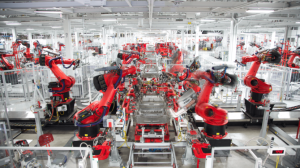Insufficient cable length might seem like a minor oversight, but it can lead to a cascade of hidden costs across installation, performance, safety, and long-term operations. These issues are often not obvious until the cable is in use, at which point rectifying them becomes expensive and time-consuming. The following sections outline the key areas where these hidden costs occur and offer practical strategies to avoid them in industrial and infrastructure projects.
What Are the Hidden Costs of Insufficient Cable Length?
1. Increased Installation and Labor Costs
Additional purchases: If cables fall short, temporary fixes like extension cables, adapters, or reorders become necessary. These not only add to the material cost but often involve premium pricing due to urgency.
Construction delays: Adjustments such as re-routing cables or repositioning equipment to compensate for the shortfall can delay the entire project, increasing operational downtime and impacting project delivery timelines.
Labor waste: Installers must spend extra time troubleshooting and adapting installations, often needing to undo and redo work. This inefficiency directly inflates labor costs and diverts resources from other critical tasks.
2. System Performance and Reliability Issues
Short cables can necessitate inefficient routing or additional connectors, which increase resistance and signal loss in power or data transmission. This degrades system performance, affects energy efficiency, and can cause malfunctions or intermittent failures in electrical systems.
3. Maintenance and Replacement Costs
Improvised solutions often wear out faster, leading to more frequent maintenance and early replacement. Junctions and adapters are weak points that are prone to failure, adding to the operational maintenance burden.
4. Safety Hazards
Stretching cables or using inappropriate connectors can lead to overheating, sparking, or short circuits. These practices increase the risk of fire, electrical shock, and damage to expensive equipment, posing a danger to personnel and property.
5. Long-Term Operational Efficiency Losses
Improper cabling impacts overall system design, leading to inefficiencies in power delivery or data flow. Over time, this reduces the life expectancy of machinery and increases energy consumption, driving up operational costs.
Classic Engineering Cases of Insufficient Cable Length
1. The London Heathrow Airport Terminal 5 Opening Disaster (2008)
Event Overview: On March 27, 2008, the £4.3 billion Terminal 5 at Heathrow Airport experienced a complete breakdown of its baggage handling system on its opening day. This led to hundreds of flight cancellations and tens of thousands of passengers stranded. One of the fundamental causes was the power cables for some baggage conveyor belts being insufficient in length, causing loose connections and frequent power outages in the system.
Impact: Direct losses exceeded £20 million on the first day alone. British Airways and BAA faced severe public relations crises. Subsequent remedial actions included reinspecting all cable connections and adding redundant designs.

2. Tesla Gigafactory Battery Production Line Shutdown (2017)
Event Overview: In 2017, Tesla’s Gigafactory faced significant production delays during the ramp-up of the Model 3. One contributing factor was the insufficient length of cables connecting automated machinery, leading to frequent equipment stoppages and manual interventions.
Impact: The production bottlenecks resulted in missed delivery targets and increased operational costs. Tesla had to redesign parts of the production line, incorporating longer cables and more flexible layouts to accommodate equipment movement and reduce downtime.

Identifying Signs of Insufficient Cable Length
During Installation: Cables unable to reach designated terminals, excessive tension on wires, or the need for last-minute layout changes are clear indicators. Installers often need to use makeshift extensions or reposition equipment.
During Operation: Frequent signal dropouts, irregular equipment performance, or overheating connectors point to poor cabling solutions likely caused by initial length miscalculations.
Hidden Cost Analysis
Direct Costs: Immediate expenditures like reordering cables, purchasing adapters, and paying for extended labor hours.
Indirect Costs: Delayed project timelines, increased equipment wear, and compromised safety lead to long-term financial losses and damage to reputation.
Prevention Strategies
1. Planning Phase
Begin with precise cable length calculations based on accurate blueprints and site assessments. Factor in routing paths, bends, and connection clearances. Always add a buffer to accommodate adjustments during installation. Engage technical experts early to validate the cabling design against system requirements.
2. Procurement Recommendations
Source cables from reputable manufacturers offering custom lengths and certifications. Avoid “off-the-shelf” solutions when dealing with unique or large-scale projects. Confirm product specs, tolerance standards, and compliance with local electrical codes. Request technical drawings and real-time supplier communication to reduce errors.
3. Installation Best Practices
Train installation teams on correct handling techniques to prevent stretching or kinking. Label cables clearly and maintain organized routing. Use cable management tools such as trays, conduits, and fasteners. Verify every length on-site before cutting or fixing, and keep spare lengths available for contingency.
Summary and Recommendations
Insufficient cable length can lead to serious financial, operational, and safety consequences. Careful planning, trusted sourcing, and disciplined installation practices are key to avoiding these costly pitfalls.




